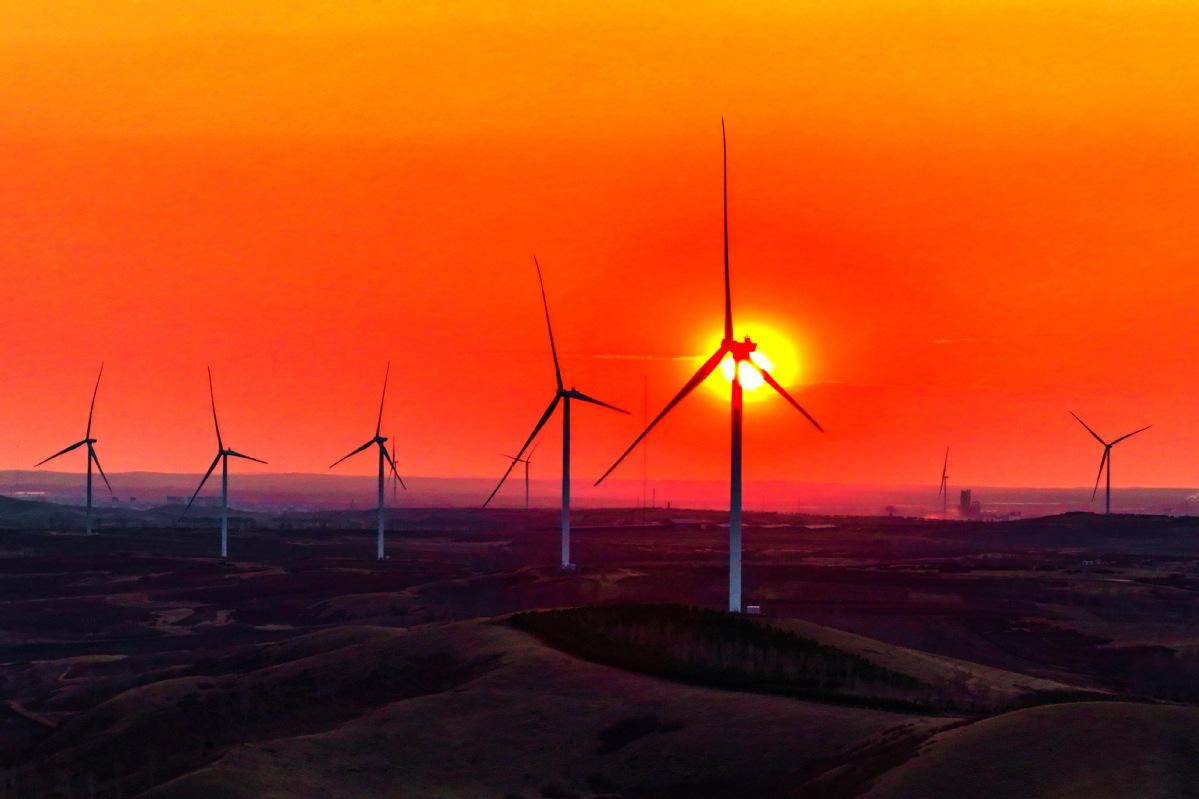Solar, wind together beat coal capacity in Q1


China's combined installed capacity of wind and solar power surpassed that of coal power for the first time by the end of the first quarter, marking a significant milestone in the country's energy transition, the National Energy Administration said.
As of end-March, the installed capacity of wind power and solar power nationwide increased by 17.2 percent and 43.4 percent year-on-year, respectively, with the combined installed capacity historically exceeding thermal power, said Xing Yiteng, deputy director-general of the department of development and planning of the National Energy Administration.
The proportion of national non-fossil energy consumption rose by 1.5 percentage points compared to the same period last year, he said during a news conference held in Beijing on Monday.
Industry experts believe that China, as the world leader in electricity production from such energy sources, has been prioritizing renewables in its energy strategy.
The rapid growth of China's renewables is particularly evident in the solar sector, which is poised to reach unprecedented levels, said Zhu Yicong, vice-president of renewables and power research at global consultancy Rystad Energy.
Rystad Energy predicts China's solar photovoltaic capacity to shatter previous records, projecting it to surpass a staggering 1,000 gigawatts by mid-2025.
As wind and solar power continue their rapid growth, their combined capacity surpassing coal power will become a regular occurrence, the NEA said.
According to a recently released report from the China Electricity Council, as the nation accelerates its energy transition, the share of coal power capacity in all Chinese provincial-level regions fell below 50 percent as of the end of March. Alongside the increase in generation capacity, investment in power grid projects also saw rapid growth. The report attributed this surge to the large-scale integration of new energy sources, upgrades to grid digitalization and intelligence, and the construction of major projects like ultra-high voltage transmission lines.
In the first quarter, investment in power grid engineering reached 95.6 billion yuan ($13.19 billion), a year-on-year increase of 24.8 percent. Investment in grid equipment saw an even sharper rise, growing by 59.5 percent, it said.
Looking ahead, the report forecasts that China's macro economy will maintain steady growth in 2025, driving stable and relatively fast growth in electricity consumption. Total electricity consumption across the country is expected to reach 10.4 trillion kilowatt-hours, an increase of around 6 percent year-on-year. The maximum peak load is projected to be around 1.55 billion kW, it said.
By the end of 2025, non-fossil fuel power generation capacity is expected to reach around 2.3 billion kW, accounting for over 60 percent of the total installed capacity. The report predicts that the share of coal power in the total installed capacity will fall to about one-third by year-end.
Beyond its massive build-out of solar and wind power, China is also making significant strides in the development of hydrogen, becoming the world's leading hydrogen producer and consumer with annual production and consumption volume exceeding 36.5 million metric tons in 2024, said the administration.
The country holds a dominant position in the global renewable hydrogen sector, accounting for over half of the cumulative worldwide production capacity, which surpassed 250,000 tons per year by the end of 2024, it said.
This rapid growth positions China as a leading nation in the development of renewable hydrogen and related industries. The country places high importance on the hydrogen sector, implementing top-level design, formulating industrial policies, and actively promoting technological innovation, it said.




































